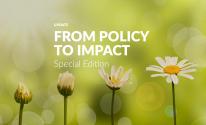
Chapter 3
Working on the future of Health & Care
The launch of the Mission-driven Top Sectors and Innovation Policy
The Dutch government decided to implement the Mission-driven Top Sectors and Innovation Policy in 2019 to give even more direction and coherence to the innovation policy. A total of 25 missions have been established to work on major transitions within four societal themes: 1) Energy Transition & Sustainability, 2) Health & Care, 3) Security and 4) Agriculture, Water & Food. The missions are ambitious but concrete goals that will require a joint effort from industry, citizens, knowledge institutions and government (quadruple helix) in the coming decades.
With this approach, the Netherlands seeks to effectively tackle major societal challenges. Industry can optimally respond to the economic opportunities that these challenges bring. This requires a coordinated approach that transcends the boundaries of the top sectors. As the top sectors have organised themselves strongly in recent years, the partners in the quadruple helix are able to find each other quickly.
The coalition Health & Care tackles five Ministry of Health, Welfare and Sport missions. The central mission is: 'by 2040, all Dutch citizens will live at least five years longer in good health, while the health inequalities between the lowest and highest socioeconomic groups will have decreased by 30%.' The four missions to support this are outlined in the box below.

Missions of the Mission-driven Top Sectors and Innovation Policy

Mission I: Lifestyle and living environment
By 2040, the burden of disease resulting from an unhealthy lifestyle and living environment will have decreased by 30%.

Mission II: Care in the right place
By 2030, the extent of care will be organised and provided to people 50% more (or more often) than present in one's own living environment (instead of in healthcare institutions), together with the network around people.

Mission III: People with chronic diseases
By 2030, the proportion of people with a chronic disease or lifelong disability who can participate in society according to their wishes and capabilities will have increased by 25%.

Mission IV: People with dementia
By 2030, quality of life of people with dementia will have improved by 25%.
An important connecting link are the Key Enabling Technologies and Methodologies, which enable solutions to the various challenges. The two have strong overlaps with each other. Technical solutions are one side of the story, but at least as important is attention for the user, for mutual organisations and the behaviour of people. The latter aspects are central to the key methodologies.
The entirety of mission-driven innovation, Key Enabling Technologies and Methodologies is aimed at accelerating and integrating innovations into the market, thus contributing to solutions for the major societal challenges of the coming years. And since these challenges are on the agenda in many countries, these solutions will also further strengthen the position of the Netherlands as an export country.

COVID-19: acting quickly in society and economy
The outbreak of the COVID-19 pandemic required rapid action in several areas. Some sectors of the economy have been hit hard, while other sectors have to do everything in their power to keep up with the demand. The crisis demands the utmost from all large and small companies, SMEs, start-ups, scale-ups, independent contractors, knowledge institutions, research funders, researchers, front-runners and many others. However, there is a great desire to go further, to find solutions and to continue working within the new reality.
For example, the top sectors are limiting the economic impact by granting a restart to existing projects with a financial boost. Top Sector LSH is closely involved with its collaborating partners in the search for solutions for the prevention and treatment of COVID-19. Within two months, more than 20 public-private partnership projects were formed in which, in addition to private investments and in-kind contributions, € 11 million in PPP Allowance was invested.
There is a great desire to go further, to find solutions and to continue working within the new reality
Public-private partnership projects
Top Sector Life Sciences & Health (LSH) supports innovative research realised by multidisciplinary public-private partnerships (PPP). With our ongoing Match Call, made possible by the Dutch Ministry of Economic Affairs and Climate Policy, research organisations, health foundations and companies (start-ups, SMEs and industry) are invited to jointly invest in R&D that contributes to one of the five missions proposed by the Ministry of Health, Welfare and Sport. By doing this, they will jointly help build a strong and sustainable LSH sector that contributes to the global challenge “Health & Care”. Are you interested in an overview of the granted PPP projects that cover a broad scope of disciplines, from pharmaceuticals to medical technology and from healthcare infrastructure to vaccination? Then click on the link on the right to gain an overview of various PPP projects.

INTERVIEW
with Ludo van der Pol, head of the SMA Expertise Center at UMCU
& Bart Bartels, PhD researcher at the SMA Expertise Center at UMCU
On the horizon: opportunities to tackle
neuromuscular disease SMA
neuromuscular disease SMA
Spinal muscular atrophy (SMA) is a neuromuscular disorder that results in progressive muscle weakness and motor deficits. Much about the disease is still unknown, and so more research and interdisciplinary collaboration is needed to unravel SMA’s mysteries. Ludo van der Pol, head of the SMA Expertise Center at University Medical Center Utrecht expects that ‘there will be some groundbreaking developments in the next ten years that will eventually lead to people with hereditary disorders, which were long considered untreatable, gaining a completely different perspective.’ Hope is on the horizon.
Paving the way
In the Health~Holland IMPACT project, a consortium is working on elucidating pathophysiological processes in muscle tissue and exploring biomarkers for early effects of treatment. Van der Pol and Bart Bartels are participating on behalf of University Medical Center Utrecht. Bartels believes that ‘the IMPACT project is a good example of what future research will focus on, namely personalised treatment for which the efficacy can be determined at an early stage to minimise costs and patient burden’.
Van der Pol and Bartels both believe that the IMPACT project has laid the path towards realising this.
INTERVIEW
with Martijn Nawijn, molecular geneticist and immunologist at the UMCG
Mapping the behaviour of cells
in the lungs
in the lungs
Asthma is a worldwide problem, with an estimated 300 million affected individuals. The prevalence of asthma is highest between 10 and 25 years and gradually decreases at higher age, with remission rates becoming higher. In the Open Target Project, UMCG, GSK and the Sanger Institute used single-cell transcriptomic profiling of cells in the lungs to get insight in the biological pathways involved in asthma and its remission. Martijn Nawijn: ‘When you know where the pathways differ you can identify novel diagnostic and therapeutic targets.’
New discoveries
‘With the new single cell transcriptomic profiling technology, you can get unprecedented insight in the behavior of cells, by measuring the gene expression of 2-3.000 genes in individual cells’, explains Nawijn, molecular geneticist and immunologist at the University Medical Center Groningen (UMCG).
‘We thought to know each cell-type and its function in the lungs by using histology and transcriptomics. However, by looking at the individual cells at a molecular level we discover new things.’
Apply now for the PPP Allowance 2021
Does your PPP project contribute to the global challenge Health & Care? With our ongoing Match Call, we invite you to apply for PPP Allowance. In 2021, Dutch SMEs and other Dutch private parties can apply for more PPP Allowance in case of fundamental and industrial research. The application deadlines are 17 March and 6 October 2021.
Please download the TKI-LSH Match Call description here and read more about the Match Call and the requirements for PPP Allowance applications. Or contact the office (via tki@health-holland.com) to get more information or assistance in the application process.
We would like to welcome you on 19 January from 12:00 to 13:00 hrs to discuss the details of this funding opportunity. After attending the webinar, the PPP Allowance of Top Sector LSH will no longer hold any secrets for you. During the webinar, you will learn whether the instrument is suitable for your specific R&D projects, what it entails for you and your consortium partners, what the requirements are, and how to submit a proposal.

Human Capital: Lifelong learning and development
Human Capital is about lifelong learning and development: learning for a diploma, learning on the job and learning to innovate. The concept learning community was developed by the top sectors in 2016 as a conceptual model to optimally connect learning, working, innovation and research in public-private contexts. These collaborations involve both formal and informal learning, in which intensive and coordinated collaboration
between companies, knowledge institutions, civil society organisations and governments strengthen each other. In the Knowledge and Innovation Agenda 2020-2023 of the social challenge Health & Care, learning communities are also explicitly referred to as deliverables. As the labour market changes and evolves, people must learn and develop new skills throughout their working lives to remain competitive.
In Fieldlabs, Skillslabs and GROZzerdammen, a foundation is being laid for a new ecosystem of permanent education in these learning communities. The aim is to develop at least 100 learning communities in the coming years, an average of ten per Top Sector. To help realise this, the Human Capital has been launched. Details about this call can be found below.
Health Impact Accelerator
The second edition of the Health Impact Accelerator is in full swing. Over the last three months, the participating teams have worked hard on their business cases. With weekly support from the coaches and various training sessions, they have made a lot of progress and have learned a lot about social entrepreneurship. On Friday 8 January, the closing event will take place. During this event, the teams will pitch their business case in front of investors and entrepreneurs. A jury will judge the teams, and at the end, one team will be announced as the winner of this year’s Health Impact Accelerator. Keep an eye on the Health~Holland news page to discover who that is.
From idea to solid business case
‘Science and innovation have brought us a long way in healthcare, and especially in the field of prevention. Major successes such as separate drinking water pipes and sewerage, not to mention vaccines and antibiotics, have increased life expectancy significantly in recent decades and prevented a large number of diseases. And in the coming years too, we will desperately need science and innovation to tackle the major challenges facing our healthcare, such as the increasing demand for care and rising healthcare costs. Prevention, in particular, can have a huge impact on these challenges. We need scientific insights and the innovations and technological developments that result from these. These enable us to have more control over our own health and to monitor and to improve it.
The Mission-driven Top Sectors and Innovation Policy shows what science in the field of prevention is capable of; how predictive methods can be used so much more and earlier with preventive measures. At the same time, this also requires the task for politicians to make the transition from healthcare to health, to focus on health outside of the healthcare domain and to ensure that innovations are more widely accessible. A better interwovenness and cooperation between politics, science and business is one of the solutions for making healthcare future-proof.’
- Hayke Veldman, Member of Parliament, VVD






